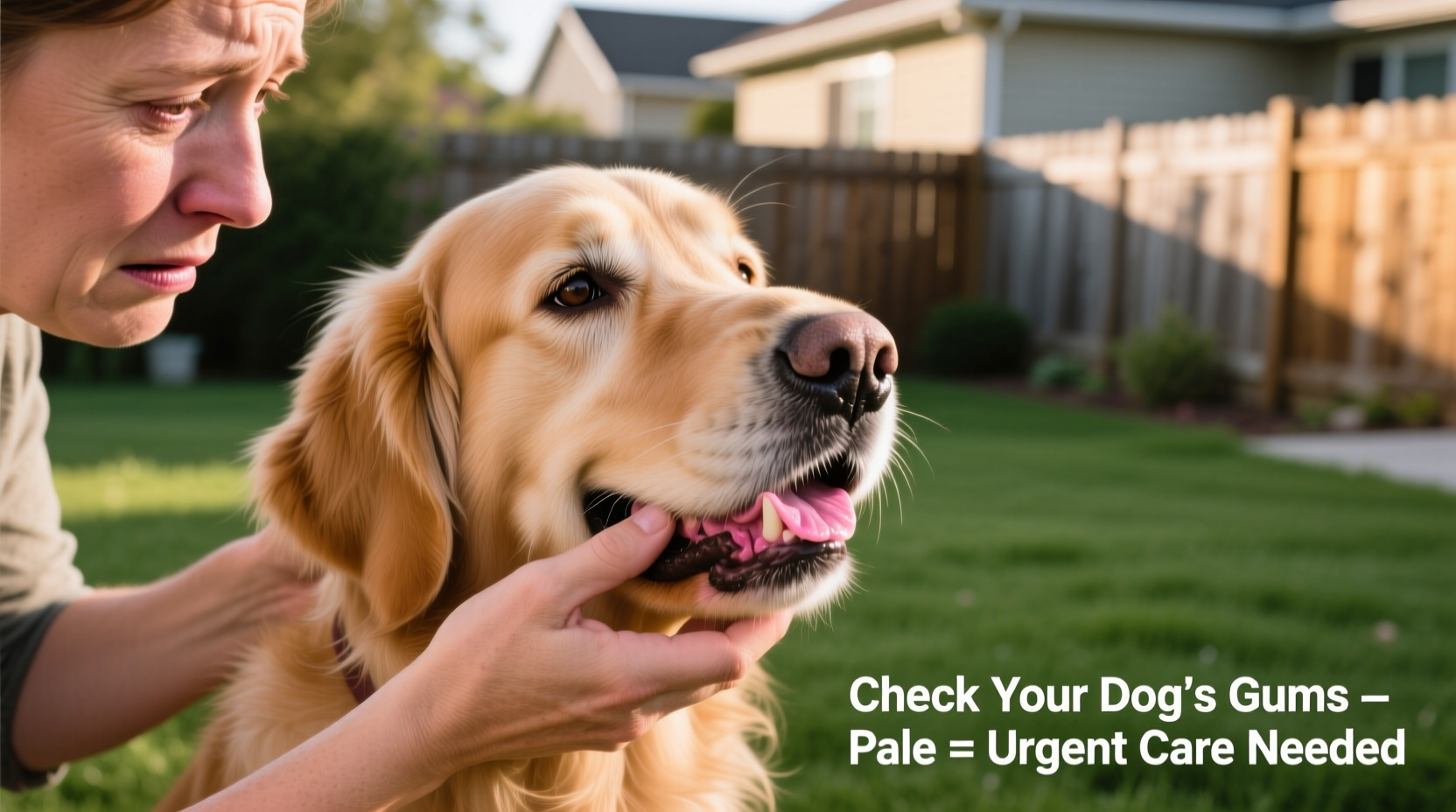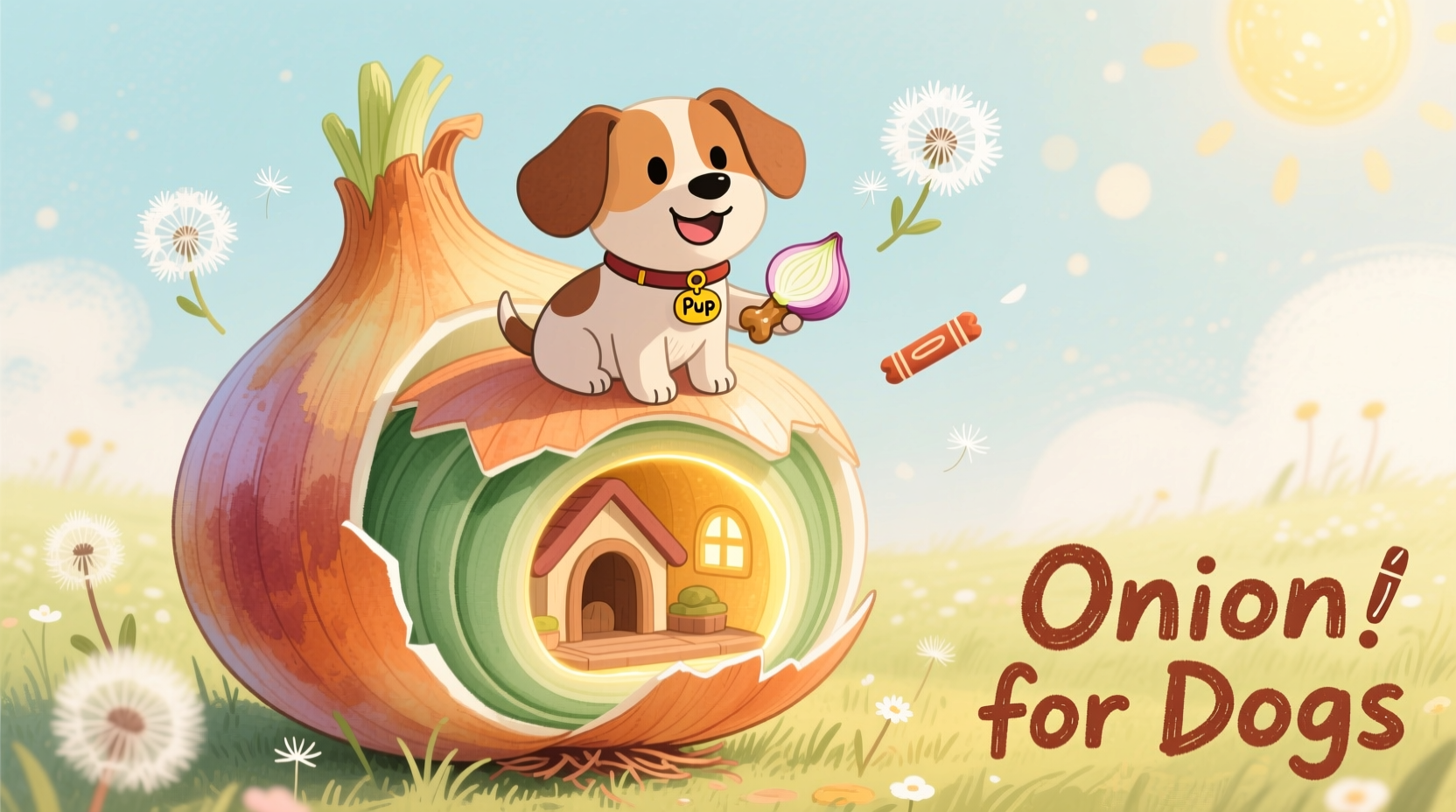Immediate Action Required: Onions are toxic to dogs in all forms—raw, cooked, powdered, or in processed foods. Even small amounts can cause life-threatening hemolytic anemia by damaging red blood cells. If your dog consumed onions, contact your veterinarian or animal poison control immediately. Do not wait for symptoms to appear.
Why Onions Pose a Serious Threat to Your Dog's Health
When you're preparing dinner and your dog eyes your cooking with hopeful anticipation, it's natural to consider sharing a bite. But onions—a common kitchen staple—represent a hidden danger that requires immediate attention. Unlike humans, dogs lack the metabolic pathway to process N-propyl disulfide, the sulfur compound in onions that oxidizes hemoglobin and damages red blood cells. This biochemical vulnerability means no amount of onion is safe for dogs, whether in your homemade stew, pizza toppings, or baby food containing onion powder.
Veterinary toxicologists at the ASPCA Animal Poison Control Center confirm that as little as 15-30 grams of onion per kilogram of body weight can trigger toxicity. For a 20-pound dog, that's equivalent to just half a cup of chopped onions. Smaller breeds and Japanese breeds like Shiba Inus face higher risks due to genetic predispositions affecting their red blood cells.
| Onion Form | Toxic Threshold (Per 20 lb Dog) | Common Hidden Sources |
|---|---|---|
| Raw onion | ½ cup chopped | Salsas, salads, sandwiches |
| Cooked onion | Equal toxicity | Gravies, soups, casseroles |
| Onion powder | 1-2 tsp | Seasoning blends, baby food, processed meats |
| Garlic (Allium family) | 5x more concentrated | Garlic bread, sauces, supplements |
Recognizing Onion Poisoning: Critical Timeline and Symptoms
Many dog owners mistakenly believe cooked onions are safe, but the toxic compounds remain stable through cooking. Symptoms often appear 1-5 days after ingestion as damaged red blood cells rupture, causing hemolytic anemia. Recognizing these progression stages could save your dog's life:
- 0-24 hours: Vomiting, diarrhea, abdominal pain (often mistaken for simple stomach upset)
- 24-72 hours: Lethargy, weakness, rapid breathing, pale gums (signs of developing anemia)
- 3-5 days: Dark urine (hemoglobinuria), jaundice, collapse (critical stage requiring emergency transfusion)
A 2023 study published in Veterinary Sciences documented that 68% of onion toxicity cases were initially misdiagnosed because owners didn't report onion exposure. This delay significantly worsened outcomes—dogs treated within 12 hours had 92% survival rates versus 63% when treatment began after symptoms appeared.

Emergency Response Protocol: What to Do Immediately
If your dog ingested onions, follow this vet-approved action sequence:
- Call poison control immediately: Reach ASPCA Animal Poison Control at (888) 426-4435 (fee applies) or Pet Poison Helpline at (855) 764-7661 (fee applies)
- Document critical details: Note your dog's weight, estimated onion amount consumed, time of ingestion, and current symptoms
- Do NOT induce vomiting unless specifically instructed—onion compounds can cause esophageal damage during regurgitation
- Bring onion packaging to the vet appointment to help determine toxic compounds and concentration
Veterinary treatment typically involves intravenous fluids, oxygen therapy, and in severe cases, blood transfusions. Early intervention with activated charcoal can reduce absorption if administered within 2-4 hours of ingestion. The Veterinary Information Network reports that dogs treated before symptom onset have full recovery rates exceeding 95%.
Preventing Accidental Onion Exposure in Your Home
Many dangerous exposures occur through seemingly harmless foods:
- Human foods to eliminate: Baby food (often contains onion powder), pizza crusts, gravy, French onion soup, and any dishes with visible onions
- Hidden dangers: Commercial broth cubes, seasoning salts, meat tenderizers, and some organic dog treats containing onion byproducts
- Kitchen safety protocol: Store cooking scraps in secured containers, clean countertops immediately after food prep, and designate a "dog-safe" treat jar
When dining out, specifically ask about onion content in "plain" foods like hamburger meat—many restaurants use onion-containing seasonings. For safe flavor alternatives, try dog-friendly options like blueberries, carrots, or unsalted green beans that provide crunch without toxicity risks.
Understanding the Science Behind Onion Toxicity
The danger stems from organosulfur compounds like N-propyl disulfide that oxidize hemoglobin in red blood cells, forming Heinz bodies that make cells fragile and prone to rupture. Dogs lack the enzyme glucuronyl transferase needed to metabolize these compounds safely—a vulnerability not shared by humans.
Research from the University of Minnesota College of Veterinary Medicine shows that garlic contains higher concentrations of these compounds than onions, making it approximately five times more toxic by weight. This explains why seemingly small amounts of garlic powder in processed foods pose significant risks.
Recovery and Long-Term Monitoring
Full recovery typically takes 2-4 weeks as the body replaces damaged red blood cells. During this period, monitor for:
- Exercise intolerance (reluctance to climb stairs or play)
- Increased sleeping duration
- Changes in gum color (should be bubblegum pink)
Your veterinarian will likely perform follow-up complete blood counts (CBC) to track red blood cell regeneration. Most dogs make full recoveries with prompt treatment, but severe cases with delayed intervention may develop chronic anemia requiring ongoing management.











 浙公网安备
33010002000092号
浙公网安备
33010002000092号 浙B2-20120091-4
浙B2-20120091-4